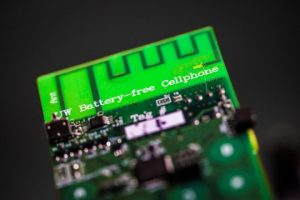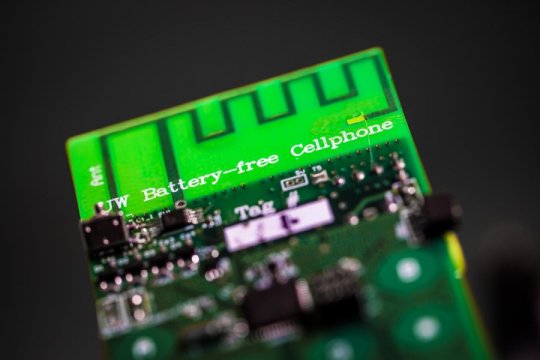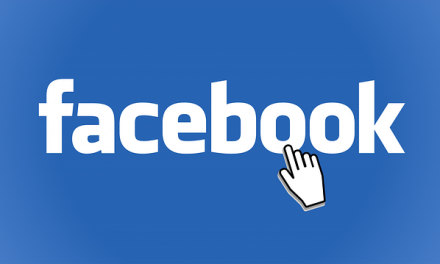
Credit: University of Washington
Won’t it be nice when we don’t have to worry about charging our cell phones all the time? University of Washington scientists have taken a big step in making that a reality some day soon. They have invented a battery-free prototype phone detailed in a paper published July 1, 2017 in the Proceedings of the Association for Computing Machinery on Interactive, Mobile, Wearable and Ubiquitous Technologies, designed to require just 3.5 micro-watts of juice, which it gets by harvesting nearby ambient energy sources.
Reduce Power Requirements
The UW team redesigned the phone based on significantly minimizing power consumption and by effectively utilizing energy from the environment, often referred to as ambient energy scavenging. A big power saving stage in the design was replacing the typical power draining process of converting analog signals that change sound into digital data. The battery-free cellphone prototype made of off-the-shelf components utilizes the small vibrations in a phone’s microphone or speaker that occur when a person is speaking or listening to a call. In an ingenious design that uses almost no power, an integrated antenna transforms the vibration into changes in standard analog radio signal emitted by a cellular base station. This process essentially encodes speech patterns in reflected radio signals to transmit speech and to receive speech, as it converts encoded radio signals into sound vibrations.
Harvest Required Ambient Energy
With the power requirements greatly minimized the phone still must scavenge the 3.5 micro-watts of power it needs. The prototype uses convenient ambient sources like radio signals and stores them in a tiny solar cell, approximately the size of a grain of rice. For the successful proof of concept Skype call, the UW team made their own base station to transmit and receive the radio signals. But the future goal would be to eventually commercialize a phone that could be powered from standard cellular network infrastructure or Wi-Fi routers now normally used to make and receive calls. To help reach these future goals the UW team will work on:
- Extending the phone’s operating range.
- Securely encrypting phone conversations to make them secure.
- To enable streaming video.
- Add a visual display feature to the phone utilizing low-power E-ink screens.










